New York Rangers: The target price range for each position group

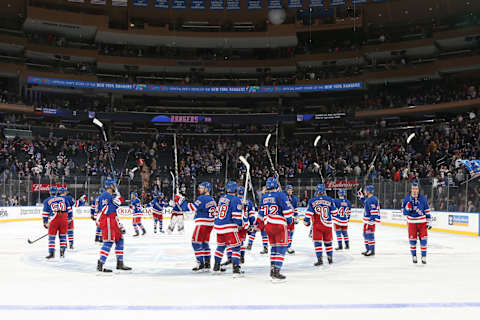
The New York Rangers have considerable financial flexibility going into a crucial summer of decisions. What’s the ideal allocation of cap space per position group?
In the last 20 years, the professional sports world has drastically shifted. Gone are the days of old school lifers of the sport that give scouting reports based on traits and potential, in their place a world of math majors from ivy league schools. Ultimately, the salary cap sports come down to maximizing value as much as possible. Where should the New York Rangers’ space go?
When it comes to doling out contracts, the most important factor to consider is the value over the life of the deal. A team really cannot afford to pay a player based on past performance out of inherent loyalty because of the way the market changes. Across hockey, football and basketball, a common strategy is developing around younger and cheaper talent.
With all three sports having restricted potential earnings for young players in the form of entry-level or rookie contracts, the talent is paid less than they’re worth. This, in turn, allows the organization to accumulate a significant chunk of the roster through the draft and focus on its needs in free agency.
As of now, the formula based on the 2018-2019 salary cap was roughly $50 million in forwards, $20 million in defenseman and $10 on goaltending. Of course, every team fluctuates based on the talent it has and this is just a rough average. Let’s take a look at some examples.
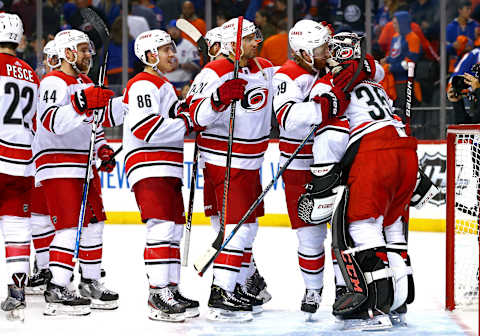
Carolina Hurricanes
$29 million forwards/$27 million defense/ $ 3 million goaltending
The main outlier in the average above is the Carolina Hurricanes. For a team that’s just two wins away from the Eastern Conference Final, the financial breakdown looks pretty light. Carolina’s financial commitments are an executive’s dream. Aside from Jordan Staal’s contract which is an overpay, there really isn’t a bad deal on the team’s books.
Where Carolina really has value is in its entry-level deals. The Hurricanes feature ten different players that make less than $3 million per season, including four on entry-level deals. The fact that former second-round pick Sebastian Aho who recorded 81 points this year only made $925,000 this year is a big boost.
The team’s back end is on the pricey end at $27 million, but it’s arguably the best unit top to bottom in the entire league. There is not a single weak link amongst the team’s top six and it has all of the blueliners under contract for at least one more year before they require extensions.
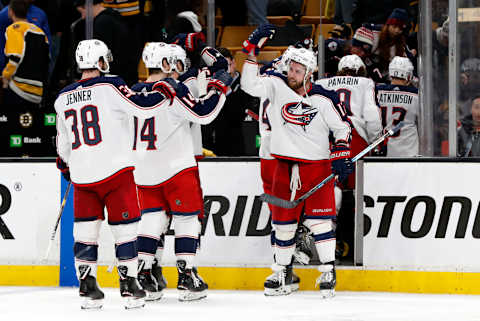
Columbus Blue Jackets
Forwards $51 million, defense $19 million, goaltending $11 million
Of the eight teams remaining in the NHL playoffs, it’s not really an argument that the Columbus Blue Jackets feature the best remaining defensive pair in Seth Jones and Zach Werenski. The unique thing that’s weird about Columbus is that the team’s books aren’t great. In fact, the Blue Jackets have multiple contracts that are just flat out bad.
The trio of Cam Atkinson, Brandon Dubinsky and Nick Foligno all have considerable term left on deals that are worth at least $5 million per season. Yet, the Blue Jackets are in solid shape in terms of both talent and finances. This is where the entry-level or below market value deals come into play and really reflect well on the organization.
When the Blue Jackets acquired Jones, the organization realized how crucial of a building block the former Nashville Predator was and locked him up long-term. At only 24-years-old, Jones is still getting better and at only $5.4 million per year, he’s an absolute steal.
Turning to the crease, Columbus pays its goaltender, Sergei Bobrovsky a premium cap hit north of $7 million per year, one of the higher rates in the league.
When the Rangers were within a window of contention this decade with Henrik Lundqvist in net, this was the model the team sought to use.
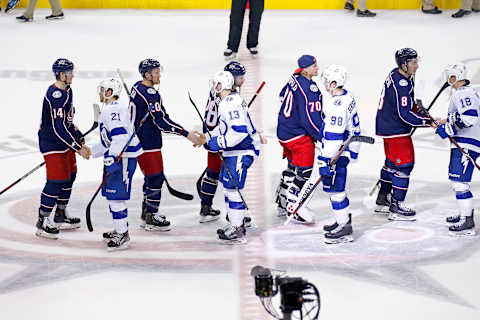
Tampa Bay Lightning
Forwards $44 million, defense $27 million, goaltending $4.65 million
While the Tampa Bay Lightning were unceremoniously punched in the mouth and exited the first round of this year’s playoffs with a whimper, its regular season was legendary. There’s a case for the Lightning as the greatest regular season team ever of the salary cap era. For 82 games it outright dominated the league with the most parity in North America.
When it comes to salary, it’s allocated exactly where one would expect. Elite talents like Steven Stamkos, Nikita Kucherov, Victor Headman and Ryan McDonagh make up a solid chunk of the financial commitments. However, key contributors Brayden Point and Mikhail Sergachev were both on entry-level deals this past year.
In the very near future, Tampa Bay is going to face a cap crunch as all elite teams do in a salary cap league. The very essence of a cap is to prevent dynasties from forming and even without a Cup, the Lightning has one of the great groups in recent memory.
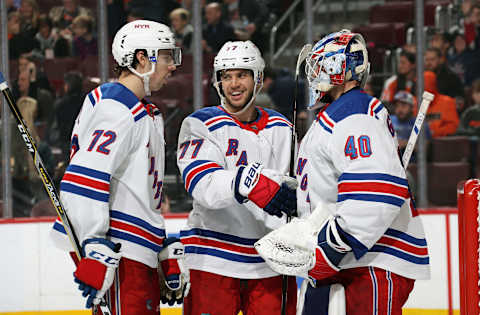
The Rangers recipe
Option 1: Forwards $42 million, defense $31 million, goaltending $9.2 million
Let’s start with the major issue, the Rangers are committed to around $30 million on the blue line even though the group doesn’t have a single top two caliber player. The contracts of Brendan Smith, Marc Staal and Kevin Shattenkirk are $15 million on their own. Add in Brady Skjei and extensions for Tony DeAngelo, Neal Pionk and Fredrik Claesson which makes for a mess.
New York is simply paying too much for below replacement level talent on the back end. This formula of $42 million upfront accounts for the signing of an impact player like Artemi Panarin or Matt Duchene at around $10.5 million with some leeway for exactly how much either would want.
The elephant in the room is Lundqvist’s $8.5 million per year that is way too much for a goaltender. With the team in front of him, there’s no point in paying the Swede a premium price. The difference between Lundqvist and a replacement level goaltender isn’t going to make the Rangers significantly worse than they already are.
Option 2: Forwards $35 million, defense $31 million, goaltending $ 9.2 million
This is the non-Erik Karlsson/Duchene/Panarin world that the Rangers could face after the first week of July if it doesn’t land a marquee free agent. The jump of about $5 million in spending from the 2018-2019 season is a result of the team’s entry-level talent like whoever is drafted number 2 overall, Vitali Kravtsov and possibly who is chosen with the Winnipeg Jets pick.
This is a less flashy team build for the immediate future, but one that will allow the team to clear the books and maintain financial flexibility. By keeping a large chunk of the cap available the Rangers would be in a position to make more moves down the line. Building a quality team that’s also sustainable requires drafting well.
Next. The changing of the guard is here. dark
The cost of a quality roster fluctuates depending on the focus of the roster. It’s likely something close to an average of the three, once Lundqvist’s contract is up, the Rangers’ formula will return to what most of the league is.